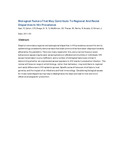| dc.contributor.author | Kaul, R | |
| dc.contributor.author | Cohen, C R | |
| dc.contributor.author | Chege, D | |
| dc.contributor.author | Yi, TJ | |
| dc.contributor.author | McKinnon, LR | |
| dc.contributor.author | Tharao, W | |
| dc.contributor.author | Remis, R | |
| dc.contributor.author | Anzala, O | |
| dc.contributor.author | Kimani, J. | |
| dc.date.accessioned | 2013-06-27T13:22:06Z | |
| dc.date.available | 2013-06-27T13:22:06Z | |
| dc.date.issued | 2011-03 | |
| dc.identifier.citation | Am J Reprod Immunol. 2011 Mar;65(3):317-24. doi: 10.1111/j.1600-0897.2010.00962.x. Epub 2011 Jan 12. | en |
| dc.identifier.uri | http://hinari-gw.who.int/whalecomwww.ncbi.nlm.nih.gov/whalecom0/pubmed/21223426 | |
| dc.identifier.uri | http://erepository.uonbi.ac.ke:8080/xmlui/handle/123456789/41247 | |
| dc.description.abstract | Despite tremendous regional and subregional disparities in HIV prevalence around the world, epidemiology consistently demonstrates that black communities have been disproportionately affected by the pandemic. There are many reasons for this, and a narrow focus on socio-behavioural causes may be seen as laying blame on affected communities or individuals. HIV sexual transmission is very inefficient, and a number of biological factors are critical in determining whether an unprotected sexual exposure to HIV results in productive infection. This review will focus on ways in which biology, rather than behaviour, may contribute to regional and racial differences in HIV epidemic spread. Specific areas of focus are viral factors, host genetics, and the impact of co-infections and host immunology. Considering biological causes for these racial disparities may help to destigmatize the issue and lead to new and more effective strategies for prevention. | en |
| dc.language.iso | en | en |
| dc.publisher | University of Nairobi | en |
| dc.title | Biological Factors That May Contribute To Regional And Racial Disparities In Hiv Prevalence | en |
| dc.type | Article | en |
| local.publisher | Department of Medical Microbiology | en |

